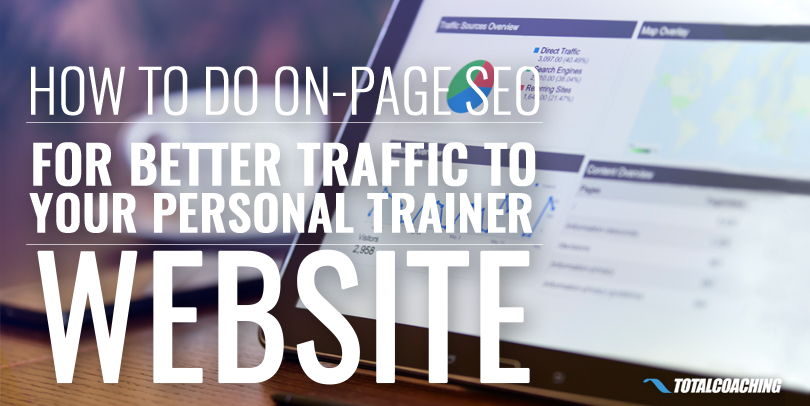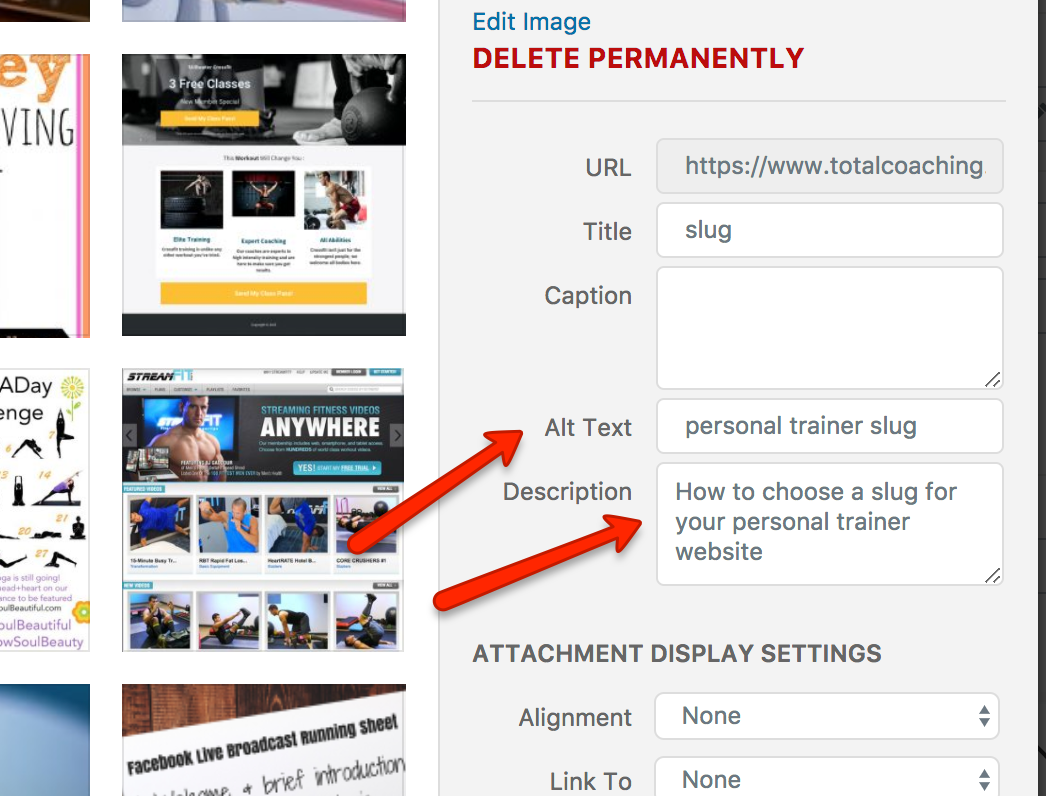You know that the success of your online fitness business rests largely on your audience. If people are following you, you’ll make more sales and your business will grow. No followers, no sales.
So, how do you get people to start following you?
One way is by increasing the traffic that flows to your fitness website, and the best way to do this (without spending a fortune on Facebook ads) is by improving your SEO.

You’ve likely heard that getting backlinks to your website will help you show up at the top of Google searches, right? While this is partially true, there is another major factor that often gets overlooked: On-page SEO.
On-page SEO includes a number of factors that you control for each page on your website. If you take the time to make these aspects of your site Google-friendly, your site becomes a traffic target. Overlook on-page SEO and your site drops off Google’s radar.
In short, on-page SEO is always worth your effort because it only takes a few minutes of your time, and can result in hundreds or thousands of prospective clients being driven to your site free-of-charge. Thank you Google!
Whether you use WordPress, Wix, Squarespace, or some other content management system (CMS), on-page SEO should be a breeze once you know what to be on the lookout for. In this article, I am going to focus on using WordPress simply because it’s the most popular CMS out there, and happens to be my personal choice.
In addition to the steps below, there are some amazing plugins (free ones!) that make on-page SEO even easier in WordPress. Yoast is far and away the most popular plugin because of its ability to allow you to edit all of the factors that we are going to go over in this post. As you have likely guessed, Yoast is a plugin I use heavily.
Ready?
Let's dive in with 5 on-page SEO strategies you should be following for your online personal trainer website:
1. Find the Right Keywords and Use Them Strategically
The point to having a well-optimized page for SEO is for it to appear higher in the search results of your future clientele. They’re currently somewhere doing a google search for “best online personal trainers” or “great online personal trainers,” and how you optimize your page will determine how much work they have to do before they click the link to your online personal training website.

The keywords you use in your posts are navigation mechanisms for your page. They tell Google (and readers) what your page or blog post are all about. A great way to improve SEO for your online personal fitness business is to optimize your keywords. This takes a little research and analysis...
By uncovering which keywords are most valuable for your clientele (i.e. the words they search for most often when looking for services like those you offer), you’ll be able to discover which of these keywords you need to be included in your text and how often you need to be using it.
For example, if your preferred clients are stay-at-home moms who are looking to get back in shape after giving birth, you might target a keyword like, "home weight-loss program for moms."
Want more help finding your ideal keywords? Check out this video where I explain the process I use:
Using too many keywords is a "black-hat" (i.e. sketchy!) SEO technique known as keyword stuffing, and should be avoided at all costs. Use keywords strategically and naturally, so that Google gets the indications it needs to know what your site is about, while the content reads well for your visitors.
2. Optimize the Slug of Each Page
Now, It's time to optimize your slug. The "slug" is the string of words found at the end of the web address for a particular page on your site. For example, this page you're on right now has the slug, "seo-personal-trainer-website," which tells Google and your readers what to expect from this page.

Optimizing your slug can be done as you create the post. All you’ll need to do is locate the edit button beneath title bar, click it and change the slug to something more relevant. It shouldn’t be more than a few words.
Again, your slug is another indicator telling Google what your webpage is offering. Be as specific as possible so that Google knows exactly who should be seeing your content.
3. Fine-Tune Your Title Tag and Meta Description
The title tag and meta description of your website dictate what shows up when someone comes across your page in a Google search. Here's what you'd see for this page you're reading right now:

Fixing up your title tag serves importance to not only your SEO goals, but can have a huge impact on how many people actually click your link. A well-written and enticing title tag will draw more clicks than one that sounds boring or unhelpful.
Ask yourself, "What would my ideal client be dying to read about?" Give that to him in your title tags!
4. Write Posts with SEO in Mind
When I create content for my website, I do so with SEO in mind. Yes, I am writing for my readers, but the topic is determined by what they are searching for. I want traffic, so I write with the goal of improving my SEO.

As mentioned earlier, naturally incorporating your target keyword into the text is one of the keys to successful SEO optimization. Google is always updating its algorithm, and one of the more recent updates will help you write with SEO in mind...
You can now use multiple variations of your chosen keyword by incorporating synonyms and changing the order in which the keyword exists. For example, if your keyword is, "paleo diets for women," you could also use the term, "paleo diets for females" and Google would understand that you're talking about the same topic.
Using variations of your target keywords is a great way to increase your on-page SEO power without keyword stuffing (which risks that Google will flag your site as being spammy).
5. Use Images for On-Page SEO Power
Don't just drop any image onto you site and leave it as-is. Doing so will miss out on another way to tell Google what your business is all about.
Instead, you should be paying special attention to something known as the ALT tag and description for each image used on. Here's what this looks like in WordPress:

Google does something known as a “semantic search” to attempt to understand the meanings of words and phrases through the context surrounding them. Naming your image files, giving them an Alt tag, and providing a description are all important factors Google will take into consideration when determining what your site is offering.
Conclusions
The next time you write a blog post on your fitness website, remember that you're writing equally for Google and for your readers. Take into consideration the 5 SEO factors we just discussed to improve your on-page SEO. This will lead to better Google rankings and, more importantly, more prospective clients finding your site.




